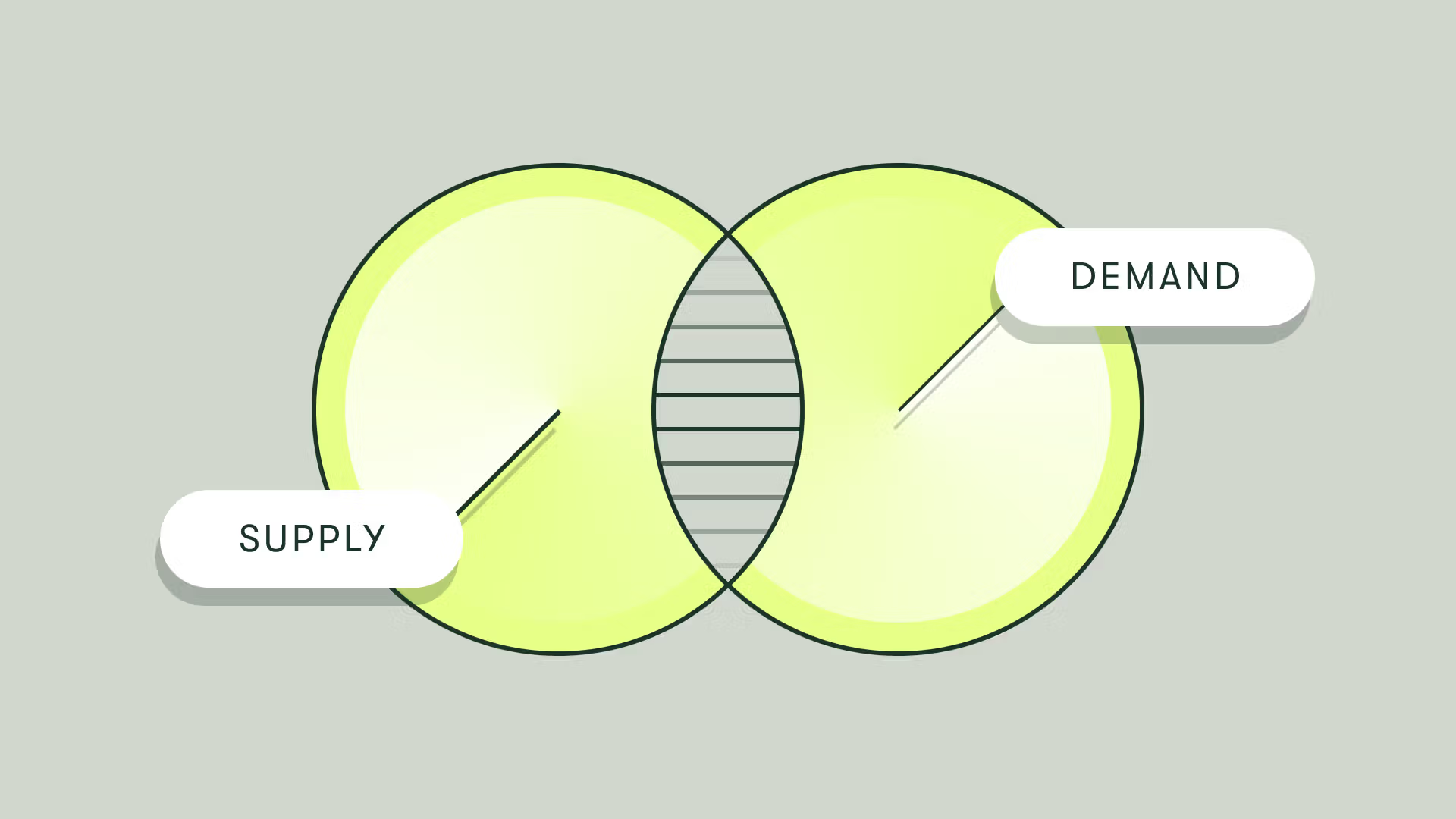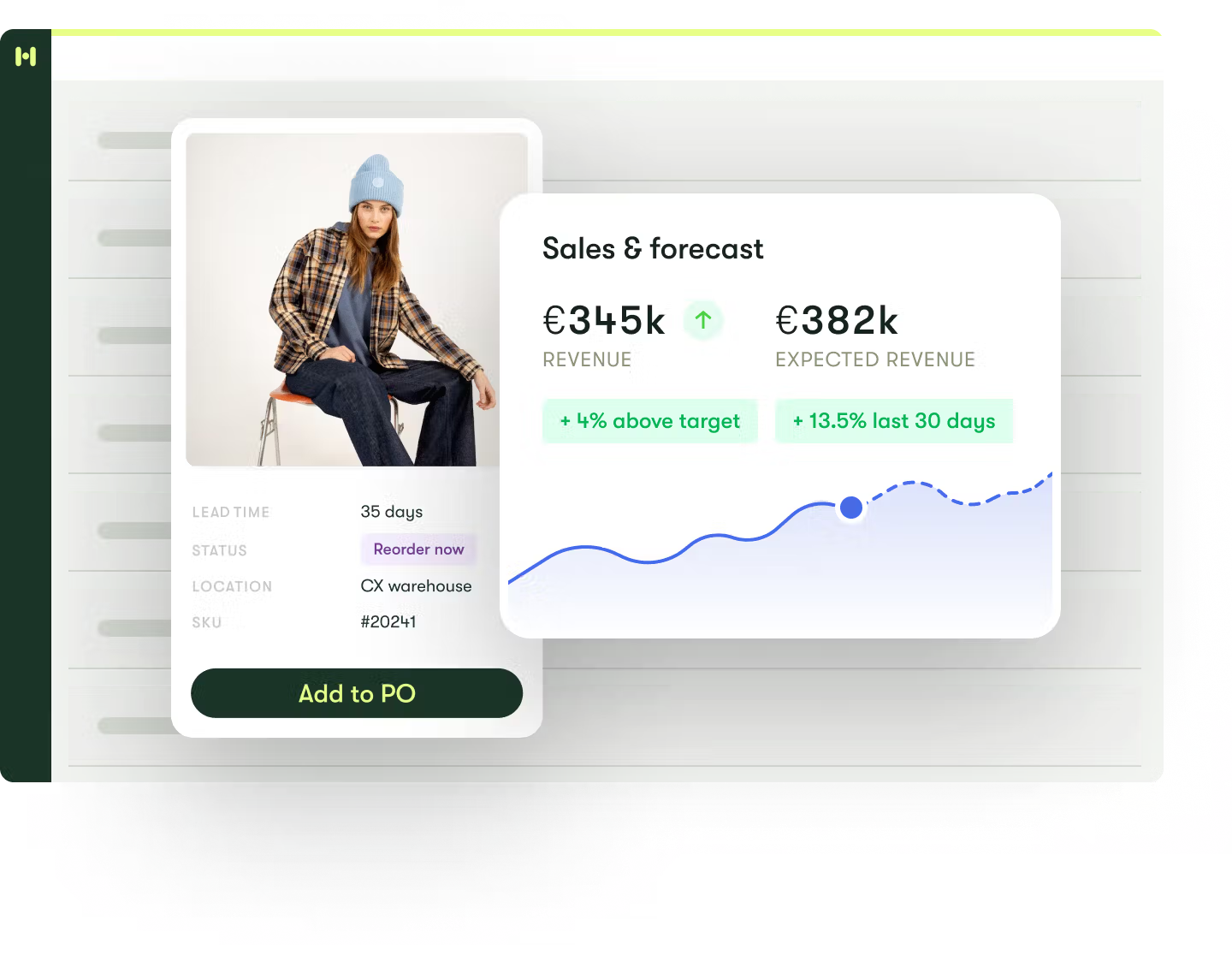What is demand planning?
In this blog post, we will take a closer look at what demand planning is, how it works, and why it is important for businesses.

What is demand planning?
Customer needs vary over time. The corresponding sales follow different complex patterns. Said briefly, demand planning is trying to predict these patterns to become more proactive.
Demand planning is essentially the first step in planning all sales and operational activities. At this stage we are not interested in the different variables that could interfere with the production or arrival of our finished goods. The demand planning process is not affected by supplier delays, lack of production capacity, or distribution problems - all of which have no direct impact on when a given customer is finding the need for one of your products. The task is to focus solely on the customer's needs.
Why should I care?
High quality demand planning helps strike the balance between product availability and minimizing cost, and often both can be improved simultaneously.
A company is constantly moving and working in a dynamic environment. There is a constant battle between satisfying customers' needs and minimizing the cost.
Demand planning is often neglected which creates an environment of high pace and "putting out fires" later on. Demand planning is generally not a focus area in smaller companies. It rarely receives the priority of leadership until the company ends up scrapping large amounts or until they experience problems in getting customer orders delivered on time and in full (having a poor service level). Here the forecast demand is frequently the cause for such outcome.
A solid foundation in forecasting and demand planning can have far-reaching positive impacts throughout the company. By taking the right first steps towards good forecasts, the benefits will extend far beyond just the immediate results:
Procurement: Having an optimized forecast will enable better supplier contracts. Being able to create transparency in the demand will make it possible for the suppliers to align their production accordingly. What is good for your supplier is good for you.
Operational buyers: With a good forecast the buyers can trust and purchase based on the signals received from software. Fewer costly express deliveries that disrupt the supply chain and stress your suppliers are needed which, additionally, will reduce the risk of creating a bullwhip effect.
Production planners: The production planners can trust and produce based on the forecast. Since the forecast is based data-driven decision making, they do not need to make the decisions. This creates a more efficient workflow by allocating more time towards tasks that add real value. This becomes especially important in the event of disruptions from in-house variables.
Production: The production can be planned to fit the demand. Products can be produced in the right order matching the demand. The capacity in terms of work hours can be optimized and will lower the amount of overtime needed.
Inventory: Having good forecasts ensures having the right amount on-stock at the right time which reduces the capital tied in inventory. Some products might still need higher inventory levels due to higher variance in customer demand, but in general the total cost of storage will lessen while increasing the availability. Minimizing cost while maximizing availability.
Workforce in Warehouse: If peaks and troughs can be predicted through forecasting then the workforce can be adjusted accordingly. Furthermore, the ordering/planning of outbound shipping will not be misaligned. More efficient work hours equals more time for value adding tasks and less decision making.
Thus, you should be concerned about demand planning because it has the potential to create a more healthy working environment, save time, minimize scrap and inventory while increasing customer satisfaction through availability.
How can I improve my forecast?
Good forecasts combine time series analysis with market insights. In other words, using historic demand and qualified guesses of future events to come up with the best estimate of future sales.
Time series analysis, the use of statistics on historic demand, is often the most important thing in improving the demand forecasts (an exception is product launches where no prior sales data is available). The statistical estimations of the sales should serve as the starting point for the forecast, which can then be enriched by market insights and organizational prioritizations.
Uncovering valuable market insights can be the key to making an accurate forecast. This information is often gleaned from sales and marketing data, which can provide a wealth of information about the market. From tracking the expected closure of a major sales deal, to planning impactful marketing campaigns, this information is critical in shaping a precise forecast. By utilizing these key market insights, businesses can make informed decisions and stay ahead of the curve.
You might have heard terms like "we expect xx % growth", "there is a very lumpy demand", "the orders have reached a new level". But what does this mean and more importantly how do we use it in our planning?
How to improve your demand planning?
Customers want their order on time and at an affordable price. When a customer is satisfied with the service of a company they are likely to order again or share the positive experience. How do we increase customer satisfaction through increased availability while minimizing cost? Search no more - demand planning is the answer! Demand planning is all about trying to predict the pattern of which customers are ordering finished goods.
The following steps are essential in a good demand planning process
1. Gather and structure data
Data-driven decision making is a fundamental part of demand planning, but to be data-driven you need solid data. The quality of your input affects the quality of your output. The most essential data needed for the demand planning process is your historical sales data.
2. Segmentation
Segmentation is a huge part of forecasting. Expecting all products to be forecasted in the same manner is a pitfall that many companies fall into. The segmentation of products will let you apply different logics to identify trends based on your parameters. Therefore, before using a forecasting algorithm, segment your sales data into data clusters with similar attributes.
3. Visualization
Data can be overwhelming - especially when having a medium to large sized portfolio. It is much easier to discuss a plan when data is presented in a visual way. This facilitates better cross-departmental sparring, trust and agreement.
Let's look at an example
First and foremost, we have to determine our planning periods - the periods we want to compare. These periods may differ depending on the product we are selling and what we are looking for. Typically, we analyze sales growth by quarters or years. We ask ourselves: What tendencies are we observing? Are we seeing growth when comparing weekly sales with the same period last year?

Here we see a demand pattern that has various fluctuations across the last 12 months. There is however no obvious indications of an upwards or downwards trend. The visible fluctuations may be structural seasonal patterns while others might be due to randomness. The presence of seasonality can be identified by looking at sales patterns further back in time, from either the product itself or products that are of similar in nature.
Now, we need to select a prediction model to make our forecasts. Below, we show an example of simple exponential smoothing and a slightly more advanced model that accounts for potential trend and seasonality.

Considering the entire demand period, the more complex model will be better at capturing structural trend or seasonality patterns in the demand. The simple exponential smoothing solely bases it's forecast on the few observations closes to the forecast start date. Producing a 'flat line forecast' for the entire period. Hence - depending on the level of safety stock - modelling future demand using simple exponential smoothing, could result in multiple stockouts during the periods with seasonal spikes. However, depending on the lead time of a given product, a short term exponential smoothing forecast can still be a valuable tool.
Along with seasonality, another important component of demand is trend. Having a model that - seeing through all the seasonal patterns - can identify an upwards or downwards trend is vital to avoid the risk of excess stock, as well as stockouts.
This decision of picking a forecasting model might look very easy when looking at the graph, but handling hundreds or thousands of SKUs (stock keeping units) is a very time consuming process (some might say impossible). That is why structured data and segmentation of products in terms of trend, variance, and volume makes it possible to apply the correct logic and makes it a vital step in conducting the best possible forecast for you.
1st rule about forecasting
A forecast is always wrong. You simply can't predict the future. However, by making a solid preparation and continuously trying to improve with the use of demand planning software, you can get as close as possible - and that it certainly worth the investment. Thanks for reading. Hope this will help you and your company on the journey of optimizing the supply chain. Best of luck!
Stay ahead of the curve with our expert insights!
Subscribe to Hakio blog for curated insights on innovative demand planning and forecasting techniques. Sign up now and supercharge your strategy with our expert tips delivered straight to your inbox.
Interested in working with us?
Whether your career path to a role you’re interested in is traditional or not, please apply. We want to hear from all enthusiastic candidates.
Please add the title/team you are applying for in the subject line of your email, so the right person on our team will read it.
.svg)
.avif)




